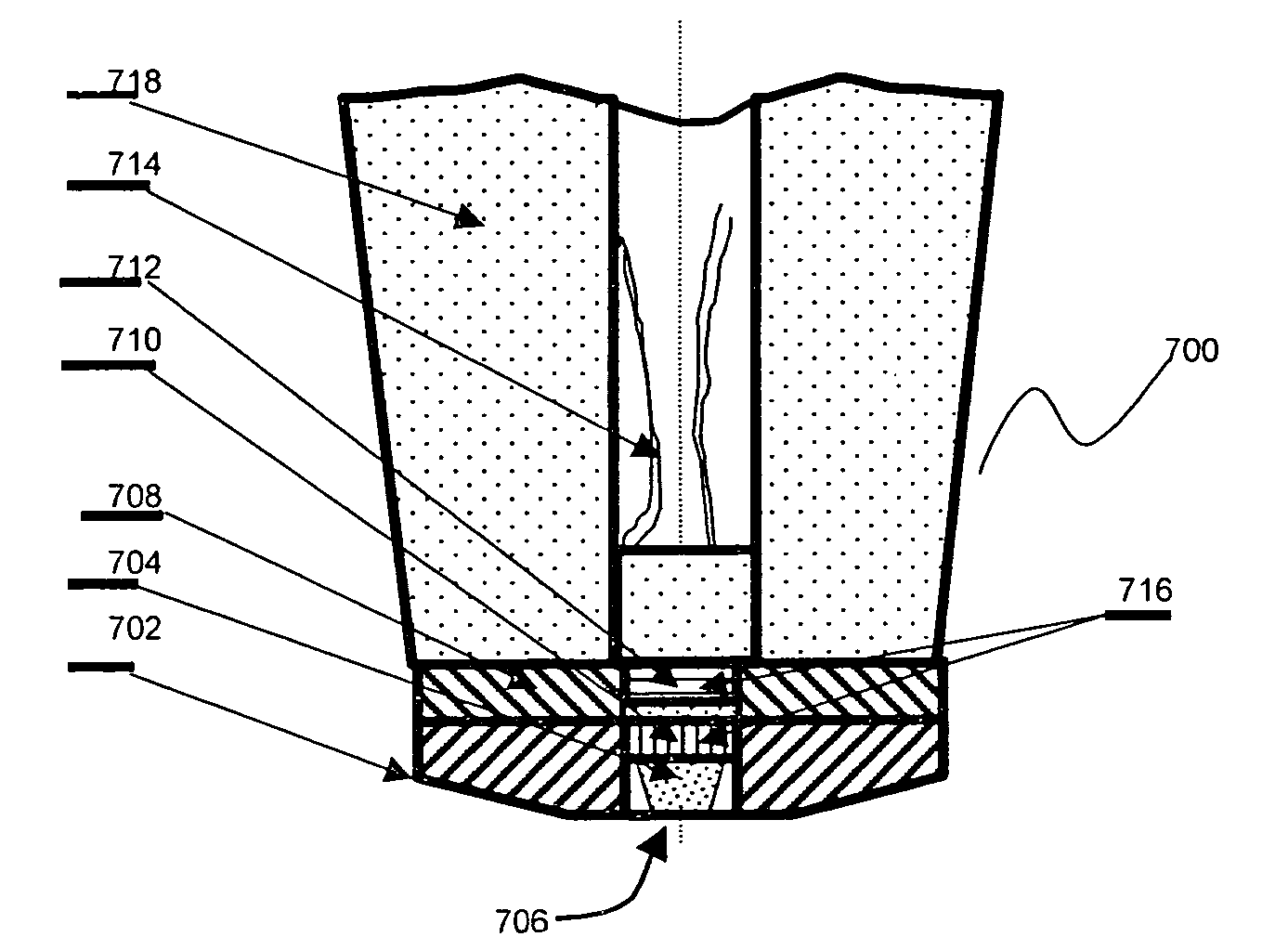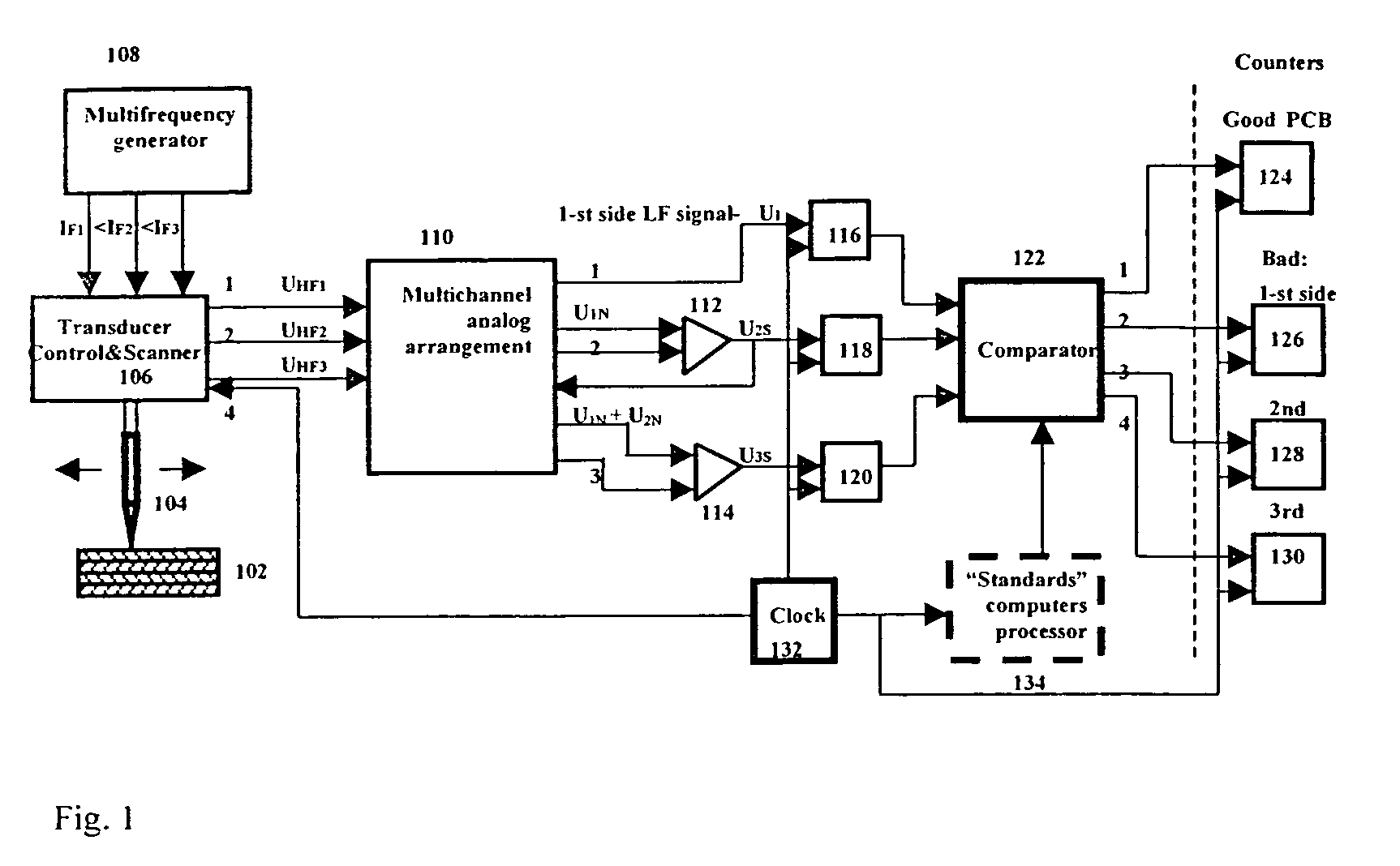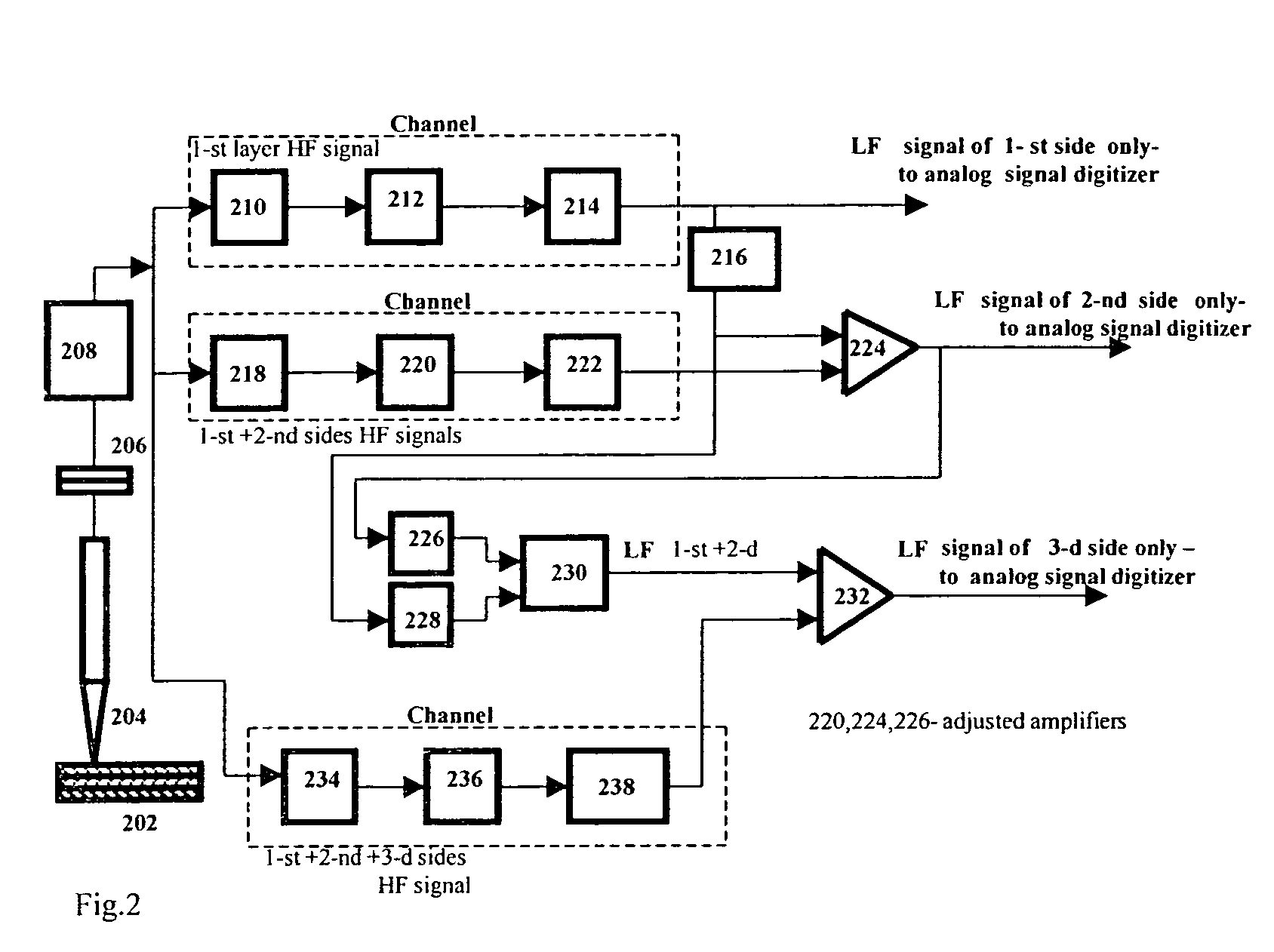Methods and devices for eddy current PCB inspection
a technology of eddy current and inspection method, applied in the direction of magnetic property measurement, material magnetic variable, instruments, etc., can solve the problems of deteriorating the functionality affecting the inspection efficiency of the pcb, and affecting the inspection efficiency of the assembled pcb, so as to achieve the inspection of the pcb very quickly
- Summary
- Abstract
- Description
- Claims
- Application Information
AI Technical Summary
Benefits of technology
Problems solved by technology
Method used
Image
Examples
Embodiment Construction
[0043]The present invention provides eddy current devices, systems and methods used to inspect single and multilayer PCBs, and to receive information from every PCB layer separately. The systems and methods include further data processing of the sensed information. The invention discloses a novel transducer having a ferrite core with preferably a sharp conical, pointed end, which provides a high EM field gradient in the small gap, typically 0.5–0.2 mm, between the transducer and the inspected PCB surface. In a preferred embodiment, a sharp focus of the electromagnetic field is obtained on the PCB surface by placing an external electromagnetic field concentrator on the opposite side of the PCB. A transducer with maximal resolution is obtained by choosing a correct value of a permanent magnetic bias for the transducer's ferrite core, using a DC bias. The system of the present invention ensures minimum magnetic dissipation flow in the section of the transducer far from the inspected ob...
PUM
| Property | Measurement | Unit |
|---|---|---|
| width | aaaaa | aaaaa |
| diameter | aaaaa | aaaaa |
| magnetic permeability | aaaaa | aaaaa |
Abstract
Description
Claims
Application Information
 Login to View More
Login to View More - R&D
- Intellectual Property
- Life Sciences
- Materials
- Tech Scout
- Unparalleled Data Quality
- Higher Quality Content
- 60% Fewer Hallucinations
Browse by: Latest US Patents, China's latest patents, Technical Efficacy Thesaurus, Application Domain, Technology Topic, Popular Technical Reports.
© 2025 PatSnap. All rights reserved.Legal|Privacy policy|Modern Slavery Act Transparency Statement|Sitemap|About US| Contact US: help@patsnap.com



